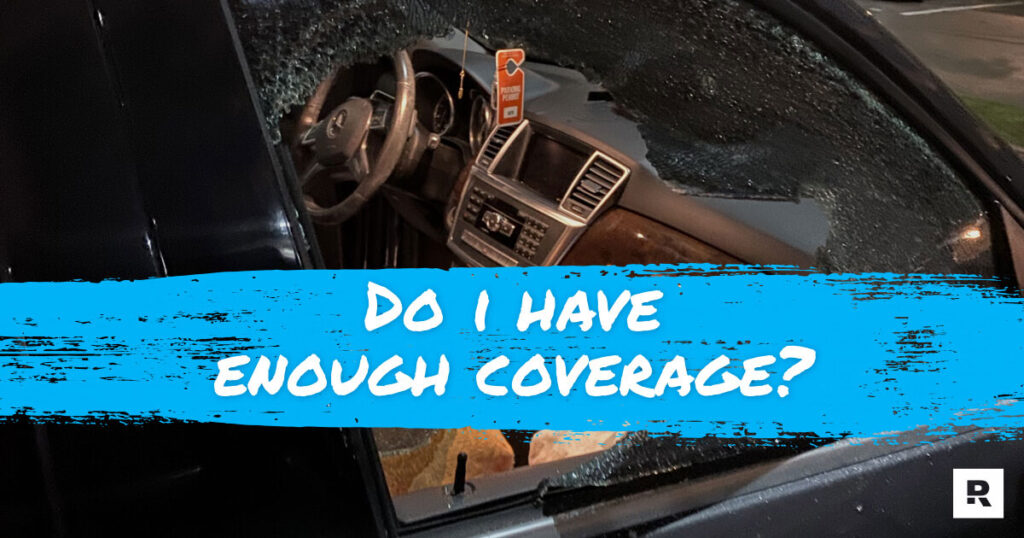Comprehensive vs TPL: Car insurance explained – Feature Stories

“It’s better to have it and not need it than to need it and not have it”.
If there’s one important purchase you have to make after buying a new (or second hand) car, it’s insurance. Think of it like having a fire extinguisher at home. You’re hoping you don’t have to use it, but it’s better to have one should there be an emergency that requires it.
Unfortunately, there are those wary of buying car insurance, probably due to the expense. Some tend to forget that not only is auto insurance required by the Land Transportation Office (LTO), but it is also a form of reassurance or back-up. Whether it’s an accident caused by you or another party, insurance serves to shield all possible parties in case of an accident from financial liabilities/expenses.
It begs the question, which type of insurance is better? Is it third party liability (TPL) or comprehensive insurance? Let’s weigh the options.
The importance of TPL
Why is it important for motorists to have this type of insurance? Imagine yourself in the aftermath of a car accident. Your vehicle is badly damaged, you sustained injuries, and another car was involved in the accident. Without TPL, not only do you have to shoulder your own expenses due to the accident, but you can also be liable for the other party’s injuries and damages. This can put drivers in a dangerous predicament because they don’t have financial protection. More importantly, this is to teach drivers to be more responsible on the road.
Having third-party liability (or TPL) is a form of insurance wherein an individual has protection from select liabilities from third party-related incidents/accidents. As mentioned earlier, the LTO requires this when purchasing a new car or renewing a car’s registration. By law, this means that you have to have TPL coverage before you’re even allowed to drive your vehicle on the road. That way, drivers on the road are covered from third-party related damages/injuries. But just how much will it cost?
The advantage of TPL is its price. The minimum price of TPL is around PHP 650 annually and covers a maximum amount of PHP 100,000. The rates of TPL are the same across models of the same vehicle type – which means no insurance company can charge more than what is set by the Insurance Commission (IC).
That means whether you get a Toyota Vios or Mitsubishi Mirage, the price of the TPL for either will be at PHP 650. This also goes for private utility vehicles like SUVs, pick-ups, and crossovers.
The limitations of TPL
So it’s inexpensive to pay annually and provides coverage of up to PHP 100,000. But TPL doesn’t protect you from everything. The keyword here is “select liability.”. So while you are protected financially from injury, death, and property damage from a third party, you will have to shoulder any damage you incur on yourself or your vehicle.
In addition, TPL can only cover persons that are outside of the vehicle. This can pertain to a random pedestrian, another vehicle, or any individual that is a non-family member. But if you happen to accidentally hit a family member or a fellow employee working under you, they will not be covered by TPL.
And should you need to pay for your own hospitalization, vehicle repair, or any legal fees, you will also have to pay for it from your finances. But for those that prefer better coverage, there’s Comprehensive Insurance.
The deal with Comprehensive Insurance
Unlike TPL, comprehensive insurance is not required by law. However, it actually provides more protection to a motorist. Not only does it cover you from third party accident costs, but it also protects you and your passengers from liabilities. From bodily injury, property damage, personal accident, theft, and personal damage, comprehensive insurance provides the best protection a motorist can have.
The only downside that comprehensive insurance has is its price. Depending on the budget or value of your car, you can get comprehensive insurance for PHP 12,000 a year. But if you want more coverage aside from the standard package, you can apply for more protection, at a cost of a higher annual premium which can go as high as PHP 20,000.
For example, a Toyota Vios 1.3 J can have an annual coverage of about PHP 15,000 a year. Add a few benefits like roadside assistance, towing service, and Acts of God coverage (which I’ll get to later), and the annual premium can go to PHP 22,000 or more.
Pricey sure, but it provides the best coverage should your vehicle be involved in an accident or incident.
Participation Fee
So you finally have insurance coverage for your car. But that doesn’t free you from a participation fee. What’s that, you may ask? Well, a participation fee is an amount you pay to an insurance company every time you have to make a claim. As an insurance holder, you are also required to ‘participate’ in your car’s repair cost.
Insurance companies require participation fees for several reasons. Firstly, the driver of the vehicle is liable for any damage it received during an incident. Secondly, participation fees serve as a deterrent for people committing fraud. Last but not least, it’s to discourage car owners from abusing the insurance benefits they have.
How much is a participation fee? It will depend on the size of the car if you have TPL coverage. As for comprehensive insurance, it’s typically priced at around 0.5 to 1.0% of a car’s current depreciated value. The only time you are required to pay this type of fee is when you are at fault in an accident. If you’re not at fault, the other party’s insurance company will reimburse you through your insurance provider.
Bonus and Extras of Comprehensive Insurance
Like any good insurance policy, there are also neat perks and extras available.
Comprehensive insurance can give you benefits not found on TPL. Depending on the insurance policy, you can have roadside assistance, free towing service, fuel delivery, ambulance service, tire replacement, battery jumpstart, and even 24/7 customer care.
But what is perhaps the most important perks is Acts of God (AOG) coverage. But before we dig deeper into that, a reminder. AOG isn’t always bundled with comprehensive insurance packages. Check the policy first if it’s included. If not, that’s when you apply an AOG policy alongside it.
Once you have AOG, you can sleep a little easier at night. With it, accidents caused by flash floods, earthquakes, and typhoons are covered by your insurance company. Other damages covered by AOG can include animal contact (like hitting an animal on the road), volcanic eruptions, fires, and even explosions. If parts of your car are stolen, comprehensive insurance may cover them as well.
How much will AOG cost you? The price of AOG coverage can vary, depending on the car itself, as well as its value (especially for second-hand cars). On some cars, it can cost around PHP 3,000 – 6,000, while more expensive models can cost you between PHP 7,000 – 9,000. So if you plan on getting AOG protection, make sure to research which insurance policy works for you (and your budget).
It’s not exactly cheap, but it’s a small price to pay compared to the hassle of handling a damaged vehicle not covered by AOG.
Should you get comprehensive insurance?
Now comes the hard question, is comprehensive insurance worth investing into? Sure, TPL is required by law and is more affordable annually. But it doesn’t provide full coverage due to its limitations. While it does protect you from third party liabilities, you have to shoulder the cost of the damages done to your vehicle or yourself.
Meanwhile, comprehensive insurance gives you more peace of mind as it can be had with the aforementioned ‘Acts of God’. Annually, however, you have to pay a pretty penny to keep your car insured. But overall, comprehensive insurance means you are well-protected from injury, personal damage, theft, and even natural disasters.
Comprehensive insurance may be seen by some as an unnecessary expense. With TPL already providing a form of financial protection, some might not be swayed to pay extra. But like health insurance, wouldn’t you want a premium level of coverage to shield you from possible financial liabilities or expenses?
Some won’t find it worth it to give a 20-year-old car fully comprehensive insurance, but to others, their cherished ride deserves it. Either way, you are required to get TPL insurance at the very least so you can get your car registered in the first place. Without it, you’ll be a liability for everyone on the road.
This content was originally published here.




Responses